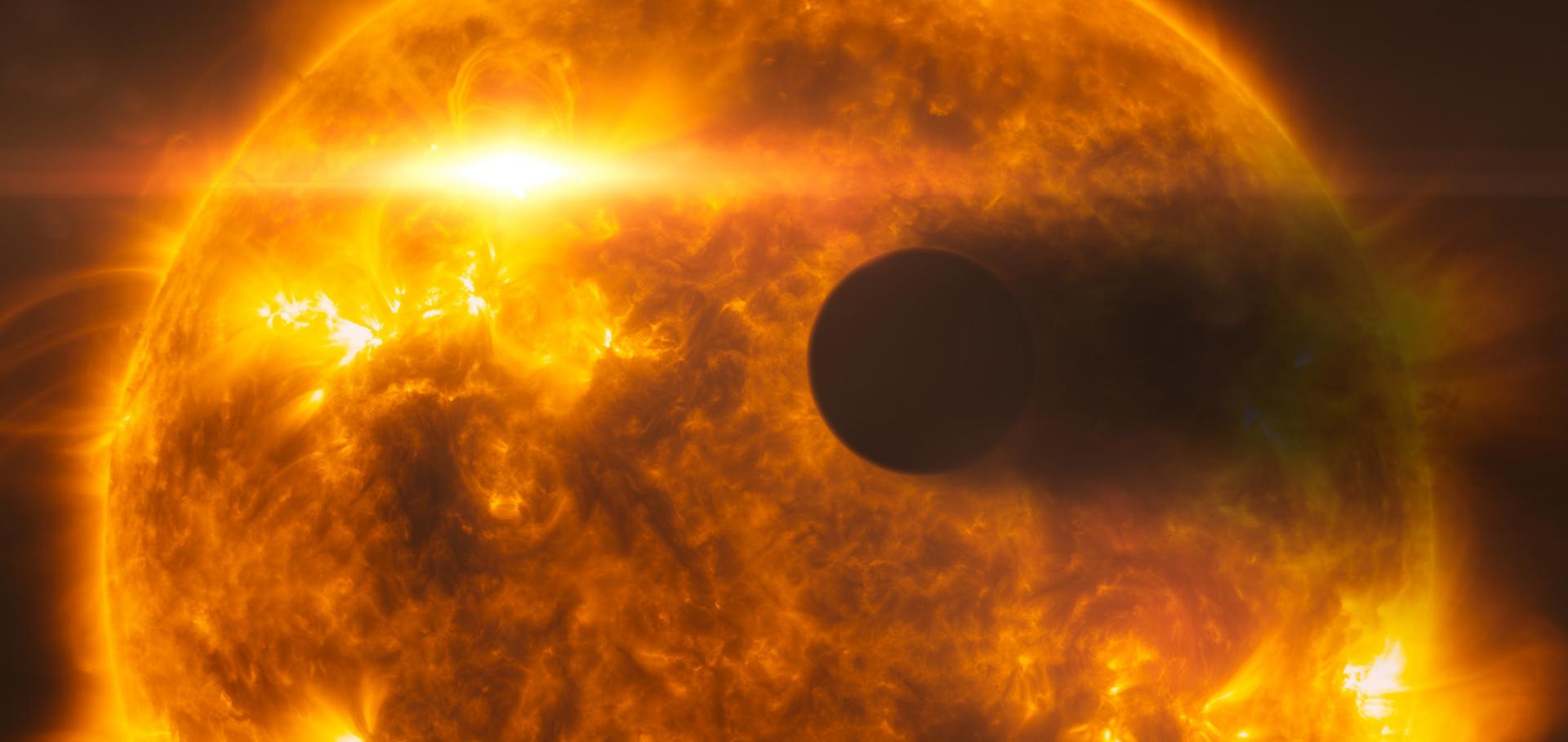Transiting exoplanets from the CoRoT space mission XIX. CoRoT-23b: A dense hot Jupiter on an eccentric orbit
Astronomy and Astrophysics 537 (2012)
Abstract:
We report the detection of CoRoT-23b, a hot Jupiter transiting in front of its host star with a period of 3.6314 ± 0.0001 days. This planet was discovered thanks to photometric data secured with the CoRoT satellite, combined with spectroscopic radial velocity (RV) measurements. A photometric search for possible background eclipsing binaries conducted at CFHT and OGS concluded with a very low risk of false positives. The usual techniques of combining RV and transit data simultaneously were used to derive stellar and planetary parameters. The planet has a mass of Mp = 2.8 ± 0.3 M Jup, a radius of Rpl= 1.05 ± 0.13RJup, a density of ≈ 3 g cm-3. RV data also clearly reveal a nonzero eccentricity of e = 0.16 ± 0.02. The planet orbits a mature G0 main sequence star of V = 15.5 mag, with a mass M* = 1.14 ± 0.08 M⊙, a radius R*= 1. 61 ± 0.18 R⊙ and quasi-solarabundances. The age of the system is evaluated to be 7 Gyr, not far from the transition to subgiant, in agreement with the rather large stellar radius. The two features of a significant eccentricity of the orbit and of a fairly high density are fairly uncommon for a hot Jupiter. The high density is, however, consistent with a model of contraction of a planet at this mass, given the age of the system. On the other hand, at such an age, circularization is expected to be completed. In fact, we show that for this planetary mass and orbital distance, any initial eccentricity should not totally vanish after 7 Gyr, as long as the tidal quality factor Qp is more than a few 105, a value that is the lower bound of the usually expected range. Even if CoRoT-23b features a density and an eccentricity that are atypical of a hot Jupiter, it is thus not an enigmatic object. © 2012 ESO.Bayesian quadrature for ratios
Journal of Machine Learning Research 22 (2012) 832-840
Abstract:
We describe a novel approach to quadrature for ratios of probabilistic integrals, such as are used to compute posterior probabilities. This approach offers performance superior to Monte Carlo methods by exploiting a Bayesian quadrature framework. We improve upon previous Bayesian quadrature techniques by explicitly modelling the nonnegativity of our integrands, and the correlations that exist between them. It offers most where the integrand is multi-modal and expensive to evaluate. We demonstrate the efficacy of our method on data from the Kepler space telescope.Time domain astronomy from Dome C: Results from ASTEP
Proceedings of the International Astronomical Union 8:S288 (2012) 218-225
Abstract:
ASTEP (Antarctic Search for Transiting Exo Planets) is a research program funded mainly by French ANR grants and by the French Polar Institute (IPEV), dedicated to the photometric study of exoplanetary transits from Antarctica. The preliminary pathfinder instrument ASTEP-South is described in another communication (Crouzet et al., these proceedings), and we focus in this presentation on the main instrument of the ASTEP program: ASTEP-400, a 40 cm robotized and thermally-controlled photometric telescope operated from the French-Italian Concordia station (Dome C, Antarctica). ASTEP-400 has been installed at Concordia during the 2009-2010 summer campaign. Since, the telescope has been operated in nominal conditions during 2010 and 2011 winters, and the 2012 winterover is presently in progress. Data from the first two winter campaigns are available and processed. We give a description of the ASTEP-400 telescope from the mechanical, optical and thermal point of view. Control and software issues are also addressed. We end with a discussion of some astronomical results obtained with ASTEP-400. Copyright © 2013 International Astronomical Union.Two years of polar winter observations with the ASTEP400 telescope
Proceedings of SPIE - The International Society for Optical Engineering 8444 (2012)
Abstract:
The ASTEP program is dedicated to exo-planet transit search from the Concordia Station located at Dome C, Antarctica. It comprises two instruments: a fixed 10cm refractor pointed toward the celestial South Pole, and a 400mm Newton telescope with a 1×1 degree field of view. This work focuses on the latter instrument. It has been installed in November 2009, and has been observing since then during the two polar winters 2010 and 2011. After presenting the main science observing programs, we review the telescope installation, performance, and describe its operating conditions as well as the data reduction and handling strategy. The resulting lightcurves are generally very stable and of excellent quality, as shown by continuous observations of WASP-19 that we present here. © 2012 SPIE.Probing the haze in the atmosphere of HD 189733b with HST/WFC3 transmission spectroscopy
ArXiv e-prints (2012)


